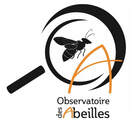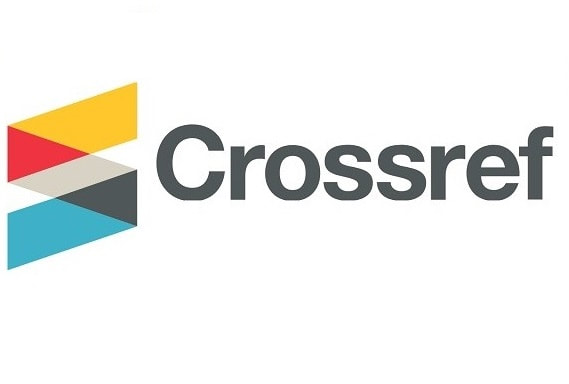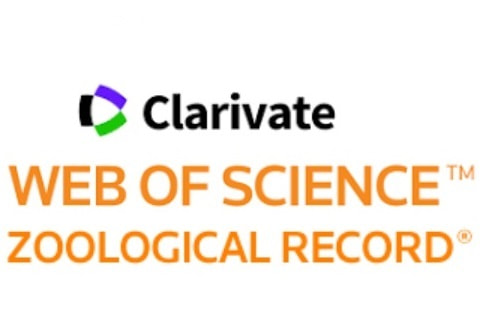Revue d'Hyménoptérologie
Journal of Hymenopterology
ISSN 2727-3806
ARTICLE |
Actualisation des connaissances sur l’abeille Megachile sculpturalis Smith, 1853 en France et en Europe (Hymenoptera : Megachilidae)
|
Violette Le Féon, David Genoud, Benoît Geslin
|
Citation
Le Féon, V., D. Genoud & B. Geslin (2021). Actualisation des connaissances sur l'abeille Megachile sculpturalis Smith, 1853 en France et en Europe. Osmia, 9: 25–36. https://doi.org/10.47446/OSMIA9.4
Received 20 June 2021 - Accepted 09 July 2021 - Published (online) 12 July 2021
Indexation • Archivage - Archiving
Résumé
Megachile sculpturalis est une abeille originaire de l’est de l’Asie aujourd’hui également présente en Amérique du Nord et en Europe. Cet article fait suite à la première synthèse sur l’écologie et la distribution géographique en Europe de cette espèce parue dans cette même revue en 2018 et propose une actualisation des connaissances. Megachile sculpturalis a été observée dans 13 pays européens. Son aire de répartition s’étend aujourd’hui des côtes atlantiques françaises à l’ouest à la péninsule de Crimée à l’est. Elle a par ailleurs été signalée dans deux îles méditerranéennes, l’île d’Elbe (Italie) et Majorque (Espagne). En France, entre 2008 et 2020, elle a été observée dans 259 communes réparties dans 44 départements. L’observation française la plus septentrionale a été réalisée en 2020 près de Reims dans la Marne. Concernant le comportement alimentaire, de nouvelles analyses polliniques viennent corroborer les résultats de précédentes études qui suggéraient un régime polylectique avec une préférence marquée pour les arbustes d’origine asiatique (Sophora japonica et Ligustrum sp. en particulier). Pour sa nidification, M. sculpturalis utilise massivement les hôtels à abeilles. Cependant, une gamme de diamètres (trous dans des bûches ou sections de tiges végétales) compris entre 4 et 8 mm permet d’héberger les principales espèces indigènes susceptibles de nidifier dans les hôtels, tout en limitant l’installation de M. sculpturalis. De nouvelles observations ont confirmé la tendance de M. sculpturalis à vider les nids d’autres espèces pour y installer ses propres cellules larvaires. Par ailleurs, en Suisse, une femelle a été observée tuant une abeille du genre Heriades. Ce type d’événements, s’ils s’avèrent fréquents, pourraient avoir des impacts négatifs sur les abeilles indigènes mais les données sont pour l’heure insuffisantes pour quantifier ces impacts sur les populations.
Mots-clefs
Espèce exotique, distribution géographique, impacts écologiques, nidification, régime alimentaire, sciences participatives
Title (translation)
Update of knowledge on the bee Megachile sculpturalis Smith, 1853 in France and Europe (Hymenoptera: Megachilidae)
Abstract
Megachile sculpturalis is a bee native to eastern Asia that is now also present in North America and Europe. This article follows the first synthesis on the ecology and geographical distribution in Europe of this species published in this same journal in 2018 and updates the knowledge. Megachile sculpturalis has been observed in 13 European countries. Its range now extends from the French Atlantic coast in the west to the Crimean Peninsula in the east. It has also been recorded on two Mediterranean islands, Elba (Italy) and Mallorca (Spain). In France, between 2008 and 2020, it was observed in 259 communes in 44 departments. The most northerly French observation was made in 2020 near Reims in the Marne department. Concerning feeding behaviour, new pollen analyses corroborate the results of previous ones which suggested a polylectic diet with a marked preference for shrubs of Asian origin (especially Sophora japonica and Ligustrum sp.). Regarding nesting behaviour, M. sculpturalis makes extensive use of bee hotels. However, a range of diameters (holes in logs or sections of plant stems) between 4 and 8 mm is suitable for the main native species likely to nest in the hotels, while limiting the establishment of M. sculpturalis. New observations have confirmed the tendency of M. sculpturalis to empty the nests of other species in order to establish its own larval cells. In addition, in Switzerland, a female was observed killing a bee of the genus Heriades. Such events, if frequent, could have negative impacts on native bees, but data are currently insufficient to quantify these impacts on populations.
Keywords
Exotic species, geographical distribution, ecological impacts, nesting behaviour, diet, citizen science
Références - References
Le Féon, V., D. Genoud & B. Geslin (2021). Actualisation des connaissances sur l'abeille Megachile sculpturalis Smith, 1853 en France et en Europe. Osmia, 9: 25–36. https://doi.org/10.47446/OSMIA9.4
Received 20 June 2021 - Accepted 09 July 2021 - Published (online) 12 July 2021
Indexation • Archivage - Archiving
- DOI: https://doi.org/10.47446/OSMIA9.4
- Zoobank (ICZN): http://zoobank.org/F5F36611-44E4-4613-9848-5A71BD6B9FF6
- HAL (CNRS-INRAE): https://hal.archives-ouvertes.fr/hal-03285483
- Zenodo (CERN): https://zenodo.org/record/5093767
Résumé
Megachile sculpturalis est une abeille originaire de l’est de l’Asie aujourd’hui également présente en Amérique du Nord et en Europe. Cet article fait suite à la première synthèse sur l’écologie et la distribution géographique en Europe de cette espèce parue dans cette même revue en 2018 et propose une actualisation des connaissances. Megachile sculpturalis a été observée dans 13 pays européens. Son aire de répartition s’étend aujourd’hui des côtes atlantiques françaises à l’ouest à la péninsule de Crimée à l’est. Elle a par ailleurs été signalée dans deux îles méditerranéennes, l’île d’Elbe (Italie) et Majorque (Espagne). En France, entre 2008 et 2020, elle a été observée dans 259 communes réparties dans 44 départements. L’observation française la plus septentrionale a été réalisée en 2020 près de Reims dans la Marne. Concernant le comportement alimentaire, de nouvelles analyses polliniques viennent corroborer les résultats de précédentes études qui suggéraient un régime polylectique avec une préférence marquée pour les arbustes d’origine asiatique (Sophora japonica et Ligustrum sp. en particulier). Pour sa nidification, M. sculpturalis utilise massivement les hôtels à abeilles. Cependant, une gamme de diamètres (trous dans des bûches ou sections de tiges végétales) compris entre 4 et 8 mm permet d’héberger les principales espèces indigènes susceptibles de nidifier dans les hôtels, tout en limitant l’installation de M. sculpturalis. De nouvelles observations ont confirmé la tendance de M. sculpturalis à vider les nids d’autres espèces pour y installer ses propres cellules larvaires. Par ailleurs, en Suisse, une femelle a été observée tuant une abeille du genre Heriades. Ce type d’événements, s’ils s’avèrent fréquents, pourraient avoir des impacts négatifs sur les abeilles indigènes mais les données sont pour l’heure insuffisantes pour quantifier ces impacts sur les populations.
Mots-clefs
Espèce exotique, distribution géographique, impacts écologiques, nidification, régime alimentaire, sciences participatives
Title (translation)
Update of knowledge on the bee Megachile sculpturalis Smith, 1853 in France and Europe (Hymenoptera: Megachilidae)
Abstract
Megachile sculpturalis is a bee native to eastern Asia that is now also present in North America and Europe. This article follows the first synthesis on the ecology and geographical distribution in Europe of this species published in this same journal in 2018 and updates the knowledge. Megachile sculpturalis has been observed in 13 European countries. Its range now extends from the French Atlantic coast in the west to the Crimean Peninsula in the east. It has also been recorded on two Mediterranean islands, Elba (Italy) and Mallorca (Spain). In France, between 2008 and 2020, it was observed in 259 communes in 44 departments. The most northerly French observation was made in 2020 near Reims in the Marne department. Concerning feeding behaviour, new pollen analyses corroborate the results of previous ones which suggested a polylectic diet with a marked preference for shrubs of Asian origin (especially Sophora japonica and Ligustrum sp.). Regarding nesting behaviour, M. sculpturalis makes extensive use of bee hotels. However, a range of diameters (holes in logs or sections of plant stems) between 4 and 8 mm is suitable for the main native species likely to nest in the hotels, while limiting the establishment of M. sculpturalis. New observations have confirmed the tendency of M. sculpturalis to empty the nests of other species in order to establish its own larval cells. In addition, in Switzerland, a female was observed killing a bee of the genus Heriades. Such events, if frequent, could have negative impacts on native bees, but data are currently insufficient to quantify these impacts on populations.
Keywords
Exotic species, geographical distribution, ecological impacts, nesting behaviour, diet, citizen science
Références - References
- Aguado, O., C. Hernández-Castellano, E. Bassols, M. Miralles, D. Navarro, C. Stefanescu & N. Vicens (2018). Megachile (Callomegachile) sculpturalis Smith, 1853 (Apoidea: Megachilidae): a new exotic species in the Iberian Peninsula, and some notes about its biology. Butlletí de la Institució Catalana d’Història Natural, 82: 157–162. https://www.researchgate.net/publication/329170771_Megachile_Callomegachile_sculpturalis_Smith_1853_Apoidea_Megachilidae_a_new_exotic_species_in_the_Iberian_Peninsula_and_some_notes_about_its_biology [accessed 15 June 2021]
- Amiet, F. (2012). Die Blattschneiderbiene Megachile sculpturalis Smith, 1853 (Hymenoptera, Apidae) nun auch in der Schweiz. Entomo Helvetica, 5: 157–159. https://portal-cdn.scnat.ch/asset/f0369680-f0eb-5736-8a58-3300e5404c4c/157_159_Amiet_Megachile?b=35ba46b7-0cd5-53d9-a694-efb82bf70a20&v=6879f101-22f6-5c84-bcca-0dd90fd35e6b_0&s=SEuBi4R-LOpMrLYi76wTR9CtjRGsfZmbv9uWpYKwcrkoBdn_SIVr2tRyHpVioj-FABfsH7AfE4wF9ThYAjiakH3xXBpLS6YfZ33QHddcTOmN4AtyoySKkZnEJ7cH7cotrPphF-gVPtlICO825bmpjSZC5dIZ7VvM3oPCc-xYrCY [accessed 15 June 2021]
- Andrieu-Ponel, V., P. Ponel, V. Le Féon, B. Geslin & G. Duvallet (2018). À propos du comportement de butinage de Megachile sculpturalis Smith, 1853, en France méditerranéenne (Nîmes et Montpellier) (Hymenoptera, Megachilidae). Bulletin de la Société entomologique de France, 123(1): 49–54. https://doi.org/10.32475/bsef_1984
- Bartomeus, I, J. S. Ascher, J. Gibbs, B. N. Danforth, D. L. Wagner, S. M. Hedtke & R. Winfree (2013). Historical changes in northeastern US bee pollinators related to shared ecological traits. Proceedings of the National Academy of Sciences, 110(12): 4656–4660. https://doi.org/10.1073/pnas.1218503110
- Batra S. W. T. (1998). Biology of the Giant Resin Bee, Megachile sculpturalis Smith, a conspicuous new immigrant in Maryland. The Maryland Naturalist, 42(1-2): 1–3. https://www.biodiversitylibrary.org/item/239237#page/1/mode/1up [accessed 15 June 2021]
- Bila Dubaić J. B. & J. Lanner (2021). Megachile sculpturalis (Hymenoptera: Megachilidae): a valuable study organism for invasive pollinators and the role of beekeepers in ongoing monitoring programs. Bee World, 98(3): 5 pp. (unknown pagination at the date of consult). https://doi.org/10.1080/0005772X.2021.1940580
- Bortolotti, L., F. Luthi, S. Flaminio, G. Bogo & F. Sgolastra (2018). First record of the Asiatic bee Megachile disjunctiformis in Europe. Bulletin of Insectology, 71(1): 143–149. http://www.bulletinofinsectology.org/pdfarticles/vol71-2018-143-149bortolotti.pdf
- Ćetković, A., L. Stanisavljević, M. Pleća, J. Raičević, V. Žikić, M. Glavendekić & J. Bila Dubaić (2020). Project: Monitoring the spread of sculptured resin bee (Megachile sculpturalis) in Serbia. Centar za biologiju pčela, Biološki fakultet, Univerzitet u Beogradu, Belgrade (Serbia). https://sites.google.com/bio.bg.ac.rs/srbee/english [accessed 01 June 2021]
- Díaz, S. S., L. Carisio, A. Manino, P. Biella, M. Porporato (2021). Nesting, sex ratio and natural enemies of the Giant Resin Bee in relation to native species in Europe. Insects, 12(6): 545. https://doi.org/10.3390/insects12060545
- Geslin, B., B. Gauzens, M. Baude, I. Dajoz, C. Fontaine, M. Henry, L. Ropars, O. Rollin, E. Thébault & N. J. Vereecken (2017). Massively introduced managed species and their consequences for pant-pollinator interactions. Advances in Ecological Research, 57: 147–199. https://doi.org/10.1016/bs.aecr.2016.10.007
- Geslin, B., S. Gachet, M. Deschamps-Cottin, F. Flacher, B. Ignace, C. Knoploch, E. Meineri, C. Robles, L. Ropars, L. Schurr & V. Le Féon (2020). Bee hotels host a high abundance of exotic bees in an urban context. Acta Oecologica, 105: 103556. https://doi.org/10.1016/j.actao.2020.103556
- Gogala, A. & B. Zadravec (2018). First record of Megachile sculpturalis Smith in Slovenia (Hymenoptera: Megachilidae). Acta Entomologica Slovenica, 26(1): 79–82. http://www.pms-lj.si/si/files/default/Publikacije/Strokovna-glasila/Acta-entomologica-slovenica/2018/1/Gogala-Zadravec_AES%2026-1_2018.pdf [accessed 15 June 2021]
- Goulson, D. (2003). Effects of introduced bees on native ecosystems. Annual Review of Ecology, Evolution and Systematics, 34: 1–26. https://doi.org/10.1146/annurev.ecolsys.34.011802.132355
- Guariento, E., J. Lanner, M. A. Staggl & P. Kranebitter (2019). Megachile sculpturalis (Smith, 1853) (Hymenoptera: Megachilidae), the giant resin bee new to South Tyrol with a newly described plant species interaction. Gredleriana, 19: 209–215. http://doi.org/10.5281/zenodo.3565365
- Ivanov, S. P. & A. V. Fateryga (2019). First record of the invasive giant resin bee Megachile (Callomegachile) sculpturalis Smith, 1853 (Hymenoptera: Megachilidae) in the Crimea. Far Eastern Entomologist, 395: 7–13. https://doi.org/10.25221/fee.395.2
- Kovács, T. (2015). Megachile sculpturalis Smith, 1853 in Hungary (Hymenoptera, Megachilidae). Folia Historico-naturalia Musei Matraensis, 39: 73–76. https://matramuzeum.nhmus.hu/sites/default/files/nhmusfiles/kiadvanyok/folia/vol39/08_Megachile_Kovacs_39.pdf [accessed 15 June 2021]
- Lanner, J., K. Huchler, B. Pachinger, C. Sedivy & H. Meimberg (2020a). Dispersal patterns of an introduced wild bee, Megachile sculpturalis Smith, 1853 (Hymenoptera: Megachilidae) in European alpine countries. PLoS ONE, 15(7): e0236042. https://doi.org/10.1371/journal.pone.0236042
- Lanner, J., P. Meyer, F. Harmetzky, H. Meimberg & B. Pachinger (2020b). Die Asiatische Mörtelbiene (Hymenoptera: Megachile sculpturalis Smith, 1853) – eine neue Bienenart für Österreich. Beiträge zur Entomofaunistik, 21: 87–95. https://www.researchgate.net/publication/347460952_Die_Asiatische_Mortelbiene_Hymeno_ptera_Megachile_sculpturalis_Smith_1853_-eine_neue_Bienenart_fur_Osterreich [accessed 15 June 2021]
- Lanner, J., F. Gstöttenmayer, M. Curto, B. Geslin, K. Huchler, M. C. Orr, B. Pachinger, C. Sedivy & H. Meimberg (2021). Evidence for multiple introductions of an invasive wild bee species currently under rapid range expansion in Europe. BMC Ecology and Evolution, 21: 17. https://doi.org/10.1186/s12862-020-01729-x
- Laport, R. G. & R. L. Minckley (2012). Occupation of active Xylocopa virginica nests by the recently invasive Megachile sculpturalis in Upstate New York. Journal of the Kansas Entomological Society, 85(4): 384–386. https://doi.org/10.2317/0022-8567-85.4.384
- Le Féon, V., M. Aubert, D. Genoud D., V. Andrieu-Ponel, P. Westrich & B. Geslin (2018). Range expansion of the Asian native giant resin bee Megachile sculpturalis (Hymenoptera, Apoidea, Megachilidae) in France. Ecology and Evolution, 8(3): 1534–1542. https://doi.org/10.1002/ece3.3758
- Le Féon, V. & B. Geslin (2018). Écologie et distribution de l’abeille originaire d’Asie Megachile sculpturalis Smith 1853 (Apoidea - Megachilidae - Megachilini) : un état des connaissances dix ans après sa première observation en Europe. Osmia, 7: 31–39. https://doi.org/10.47446/OSMIA7.6
- Mangum, W. A. & R. W. Brooks (1997). First records of Megachile (Callomegachile) sculpturalis Smith (Hymenoptera: Megachilidae) in the continental United States. Journal of the Kansas Entomological Society, 70: 140–142. https://www.jstor.org/stable/25085766
- Nieto, A., S. P. M. Roberts, J. Kemp, P. Rasmont, M. Kuhlmann, M. García Criado, J. C. Biesmeijer, P. Bogusch, H. H. Dathe, P. De La Rúa, T. De Meulemeester, M. Dehon, A. Dewulf, F. J. Ortiz-Sánchez, P. Lhomme, A. Pauly, S. G. Potts, C. Praz, M. Quaranta, V. G. Radchenko, E. Scheuchl, J. Smit, J. Straka, M. Terzo, B. Tomozii, J. Window & D. Michez (2014). European red list of bees. Luxembourg, Publication office of the European Union. https://doi.org/10.2779/77003
- Ortiz-Sánchez, F. J., J. F. Navarro, U. Taeger (2018). Megachile (Callomegachile) sculpturalis Smith, 1853, nueva especie para la fauna ibérica (Hymenoptera, Megachilidae). Boletín de la Sociedad Entomológica Aragonesa, 63: 259–261.
- Parys, K., A. Tripodi, B. Sampson (2015). The Giant Resin Bee, Megachile sculpturalis Smith: New distributional records for the Mid- And Gulf-South USA. Biodiversity Data Journal, 3: e6733. https://doi.org/10.3897/BDJ.3.e6733
- Quaranta, M., A. Sommaruga, P. Balzarini & A. Felicioli (2014). A new species for the bee fauna of Italy: Megachile sculpturalis continues its colonization of Europe. Bulletin of Insectology, 67(2): 287–293. http://www.bulletinofinsectology.org/pdfarticles/vol67-2014-287-293quaranta.pdf
- Ribas-Marquès, E. & J. Díaz-Calafat (2021). The Asian giant resin bee Megachile sculpturalis Smith 1853 (Hymenoptera: Apoidea: Megachilidae), a new exotic species for the bee fauna of Mallorca (Balearic Islands, Spain). Journal of Apicultural Research, 60(3): 506–511. https://doi.org/10.1080/00218839.2021.1874177
- Rohrbach, C. (2020). Dangerous neighbourhood dispute. Flickr. https://www.flickr.com/photos/megaptera/50287276353/in/dateposted [accessed 21 June 2021].
- Roulston, T & R. Malfi (2012). Aggressive eviction of the Eastern Carpenter Bee (Xylocopa virginica (Linnaeus)) from its nest by the Giant Resin Bee (Megachile sculpturalis Smith). Journal of the Kansas Entomological Society, 85(4): 387–388. https://doi.org/10.2317/0022-8567-85.4.387
- Russo, L. (2016). Positive and negative impacts of non-native bee species around the world. Insects, 7(4): 69. https://doi.org/10.3390/insects7040069
- Ruzzier, E., M. Menchetti, L. Bortolotti, M. Selis, E. Monterastelli & L. Forbicioni (2020). Updated distribution of the invasive Megachile sculpturalis (Hymenoptera: Megachilidae) in Italy and its first record on a Mediterranean island. Biodiversity Data Journal, 8: e57783. https://doi.org/10.3897/BDJ.8.e57783
- Sakai, A. K., F. W. Allendorf, J. S. Holt, D. M. Lodge, J. Molofsky, K. A. With, S. Baughman, R. J. Cabin, J. E. Cohen, N. C. Ellstrand, D. E. McCauley, P. O’Neil, I. M. Parker, J. N. Thompson & S. G. Weller (2001). The population biology of invasive species. Annual Review of Ecology and Systematics, 32: 305–332. https://doi.org/10.1146/annurev.ecolsys.32.081501.114037
- Simberloff, D. (1995). Why do introduced species appear to devastate islands more than mainland areas? Pacific Science, 49(1), 87–97. http://hdl.handle.net/10125/2276
- Vereecken, N. J. & É. Barbier (2009). Premières données sur la présence de l’abeille asiatique Megachile (Callomegachile) sculpturalis Smith (Hymenoptera, Megachilidae) en Europe. Osmia, 3: 4–6. https://doi.org/10.47446/OSMIA3.3
- Westrich, P., A. Knapp & I. Berney (2015). Megachile sculpturalis Smith 1853 (Hymenoptera, Apidae), a new species for the bee fauna of Germany, now north of the Alps. Eucera, 9: 3–10. https://www.zobodat.at/pdf/Eucera_9_2015_0001-0010.pdf [accessed 15 June 2021]
- Westrich, P. (2017). Faszination Wildbienen, Forschungsprojekte: Megachile sculpturalis. wildbienen.info. https://www.wildbienen.info/forschung/projekte_17.php [accessed 01 June 2021]
- Westrich, P. (2020a). Faszination Wildbienen, Forschungsprojekte: Megachile sculpturalis. [document Internet]. wildbienen.info. https://www.wildbienen.info/forschung/projekte_20.php [accessed 01 June 2021]
- Westrich, P. (2020b). Neues zur Ausbreitung der Mörtelbiene Megachile sculpturalis Smith 1853 (Hymenoptera: Anthophila) in Deutschland – Stand Oktober 2019. Eucera, 14: 12–15. https://www.zobodat.at/pdf/Eucera_14_2020_0012-0015.pdf [accessed 15 June 2021]
- Whittaker, R. J. & J. M. Fernández-Palacios (2007). Island biogeography: Ecology, evolution, and conservation. Second edition. Oxford University Press, Oxford (UK), 416 pp.










